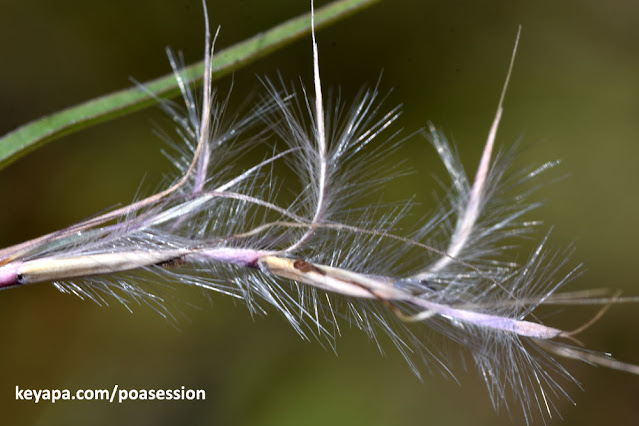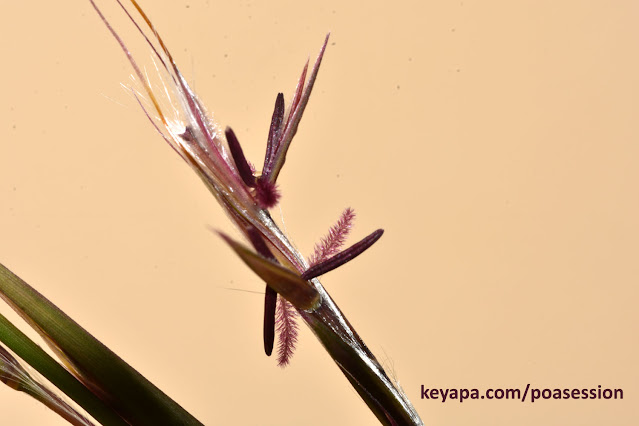I've always had a soft spot for
Schizachyrium scoparium (Little Bluestem). Not only is this species quite handsome (with some cultivars making the transition to spectacularly beautiful), but this was one of the major components of the tall grass prairies that used to dominate the American landscape, before settlers originally from Europe arrived and converted the rich lands to another type of grassland (maize fields).
 |
| Little Bluestem on roadway |
The first time I encountered
Schizachyrium scoparium was in
the White Sands Monument in New Mexico, where I stumbled on individual specimens. But on a trip to the White Mountains in New Hampshire, I finally saw entire fields of the grass.
 |
| Little Bluestem creating carpet along side of road |
Schizachyrium scoparium dominated many of the roadsides in the area, the straight and tall grass forming red monoculture carpets on the sides of highways and local streets.
 |
| Little Bluestem carpet a scenic view lot |
This was very evident along route 302 from the town of Caroll to Crawford Notch State Park, and even in the islands and sides of Interstate 93.
Schizachyrium scoparium was also present along Main Street of the town of Lincoln, NH, especially near the entranceway to Interstate 93.
I even found
S.scoparium lining the steel barriers along a railroad track!
 |
| Little Bluestem along railroad tracks |
It was obvious that masses of the grass along the roadside were regularly mowed. Some of the mowed grass had a reddish tinge to them, and in some areas single blades of Little Bluestem that had been missed by the mower rose into the roadway like lonely sentinels.
 |
| Unmowed Little Bluestem along Main Street |
The species was noticeably absent in deep forest, as well as in higher elevation areas, although I found a few specimens slightly into the UNH Trail along State Route 122, east of Lincoln.
 |
| Red culm of Little Bluestem |
Little Bluestem is also fairly easy to identify. It stands up to around 1 meter tall, with thin erect blades and reddish culms (at least in the Autumn).
 |
| Ligule of Little Bluestem |
The ligule is membranous, and the fluffy white seed heads that rise in zip zag fashion is another identifier of the species.
 |
| Seedheads of Little Bluestem |
The anthers and feathery stigmas are purplish in color and quite tiny, perhaps at most 2 mm in length. I had a great time taking in situ macro shots of the beautiful spikelets,with the sharp pointed glumes.
 |
| Stigma and Anthers of Little Bluestem |
All in all, I had a great time documenting the presence of this species in the White Mountains area of New Hampshire, and I noticed that Little Bluestem was still prevalent as you made your way south along Interstate 93 and other highways, with remnants showing up in Connecticut as well.
It is a handsome species, and I can only imagine with longing what immense fields of this and other tallgrass prairies plants must have looked like before the coming of the Empire of Maize ;-)
 |
| Little Bluestem on side of road |














2 comments:
wow, not used to seeing fields of little bluestem! I know it as common but scattered patches in mixed grass prairie though we do find it sometimes in openings in pine forest. Great close-ups, it's a beauty in many ways.
Thanks. Based on what I read, it seems such plantings were mostly done by the state. I could be wrong though. It would be nice if S.scoparium really was "aggressive" enough to spread so widely on its own.
Post a Comment